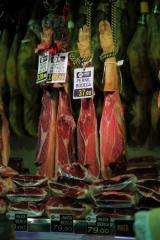Innovation in traditional foodstuffs could harm their image

Researchers from the Institute for Food and Agricultural Research and Technology (IRTA) have analysed the definitions of 'traditional food' and 'innovation' in order to predict the degree to which people will accept changes in the foods they eat. Although change seems to be accepted, the results show that some innovations in foods could harm their traditional product image.
"Producers of traditional foodstuffs (local, regional and national products that make up traditional cuisine) face problems when it comes to incorporating changes and innovations brought in by the food industry without harming their image, which is without any doubt their greatest competitive advantage", Luis Guerrero, lead author of the study and a researcher at the Institute for Food and Agricultural Research (IRTA), tells SINC.
This was what sparked the study, which has appeared in the latest issue of the journal Food Quality and Preference, and which aimed to find out how European consumers perceive the concepts of 'traditional' and 'innovation', in order to be able to predict their acceptance of changes in foodstuffs (nutritional modifications), and how these are prepared and distributed (changes in presentation and packaging).
The results show that innovation in traditional foodstuffs could damage their image, because "there is a certain incompatibility between this concept and the idea of something being traditional".
According to the research, we associate the concept of 'traditional food' with 10 dimensions - 'habit', 'special occasions', 'inheritance' (transmitted from generation to generation), 'made in a particular way', 'sensory properties', 'simplicity', being related to a 'source or origin', having an effect on 'health', influenced by 'marketing', and providing a 'variety' of products.
The concept of innovation, meanwhile, is associated with five dimensions - 'novelty and change', 'processing and technology', 'origin and ethnicity', and 'comfort'.
Differences between countries
In order to obtain these definitions, 12 group interviews were carried out in six European countries - Spain, Belgium, France, Italy, Norway and Poland. In addition, the researchers used the free word association technique on a sample of 721 consumers, using 13 key words obtained from the group interviews to prompt them.
The concept of 'traditional' obtained very similar results in all the countries, with a few differences in areas such as the importance placed on habit, special occasions and variety. There were greater differences between countries in people's perception of the concept of 'innovation', however.
More information: Luis Guerrero, Anna Claret, Wim Verbeke, Geraldine Enderli, Sylwia Zakowska-Biemans, Filiep Vanhonacker, Sylvie Issanchou, Marta Sajdakowska, Britt Signe Granli, Luisa Scalvedi, Michele Contel y Margrethe Hersleth. "Perception of traditional food products in six European regions using free word association". Food Quality and Preference 21:225-233, March 2010.
Provided by FECYT - Spanish Foundation for Science and Technology















